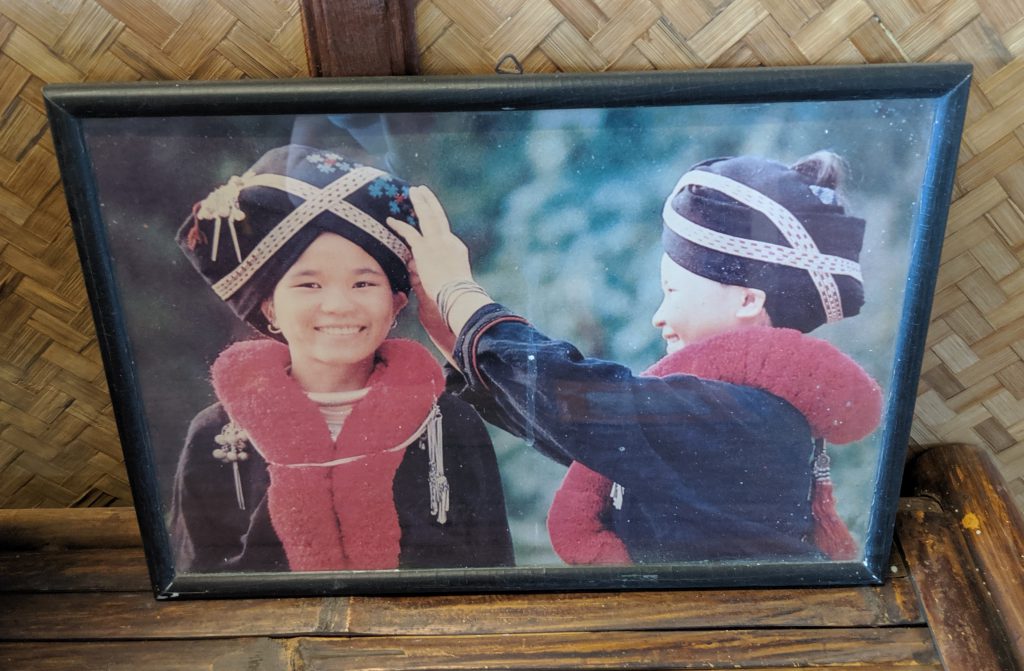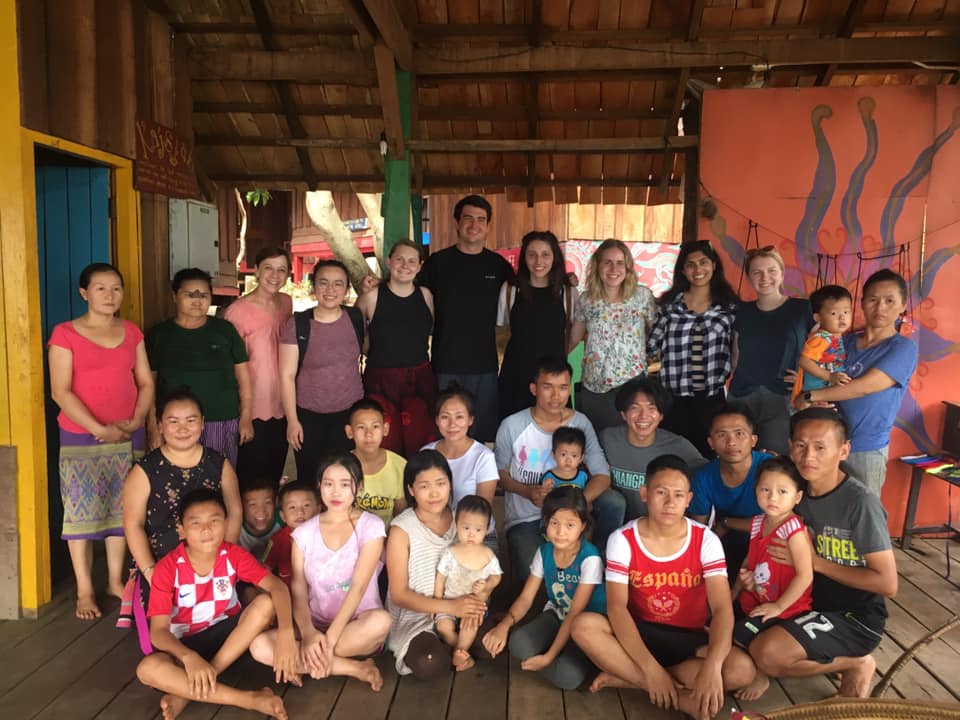There are four people in our group: Madison Brandt, Pooja Athalye, Rosie Yang, and Mckenna Turner. Our post will be discussing how sexuality is impacted by education, policy, and society in Thailand. More specifically, we will be addressing the issues of sexual education and human trafficking in Thailand. We found these issues to be significant as there is still much work to be done to improve the sexual health and wellbeing of people in Thailand. We will begin by discussing the national framework of sexual education in Thailand. Next, we will move on to discussing how local education is structuring sexual education. Our next section will discuss the background of human trafficking and the various mechanisms Thailand is taking to end of human trafficking. Our last section will cover the effects of human trafficking on survivors such as STD’s and pregnancies, and cover possible ways to reduce the risks of trafficking.
National Sex Education
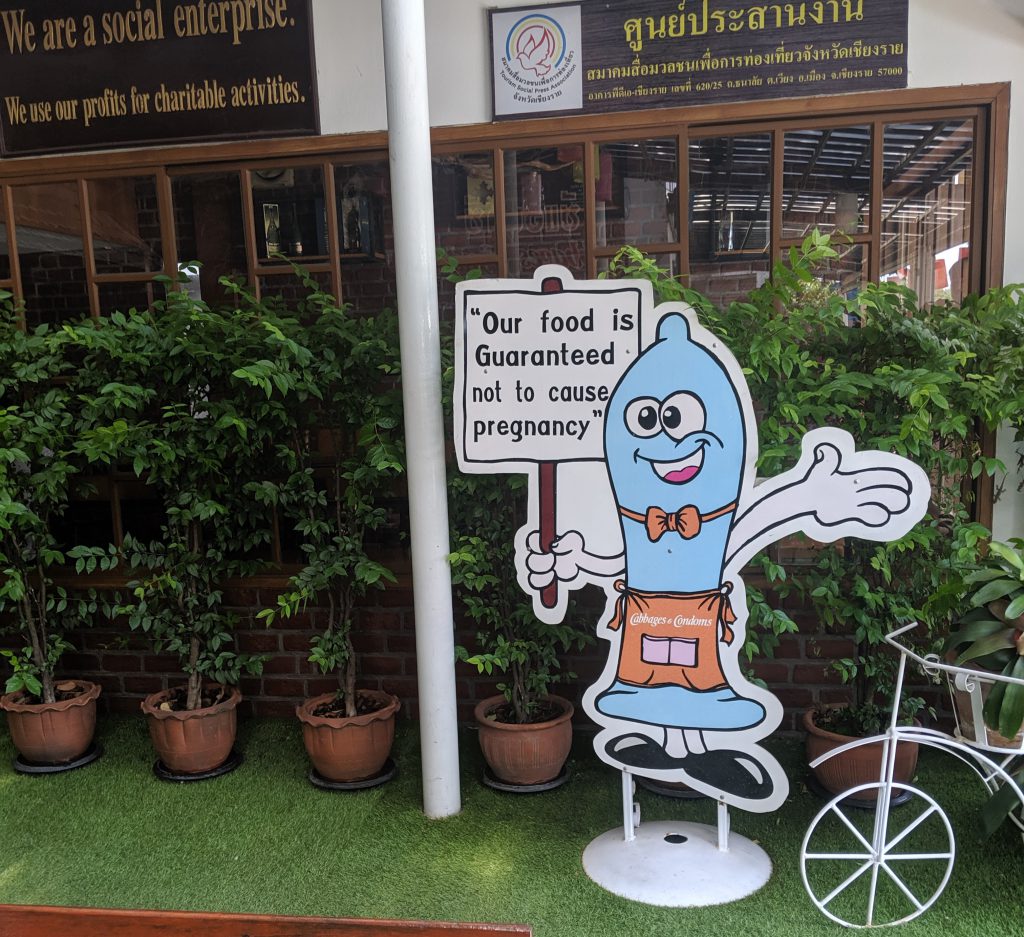
Nationally public policy regarding sexual health and education stemmed from the HIV/AIDS epidemic in the 90s. The research on the Successes and Challenges of HIV/AIDS Prevention explains that “sexual behaviors have changed significantly, with condom use increasing”; this increase usage happened through promoting condom use in the commercial sex setting government sponsored STD clinics, cooperating with sex establishment owners, sex workers, and clients to use condoms through the “100% condom program”, and supplying “almost 60 million free condoms a year to support this activity”. We saw this national change impact locals at the Population and Community Development Association (PDA) the restaurant Cabbages and Condoms. PDA is a public benefit organization that strives to promote and provide a good quality of life and equality to poor and underprivileged communities.
The purpose of Cabbages and Condoms was to help promote family planning and HIV/AIDS prevention in Thailand. Cabbages and Condoms initially started as a vegetable stand that gave out contraceptives on the property of PDA’s office and slowly transformed into a health advocacy restaurant enabling Thailand’s community at large to have access to contraceptives in an engaging way. The restaurant had a plaque explaining that through its efforts PDA has “contributed tremendously in lowering the average size of Thai families. The number of children family decreased from 7 in 1974 to 2 at present.” Eating at the restaurant made me feel like it was “ok” to talk about sexual health publicly. The national efforts for HIV/AIDS prevention in the 90s still has an impact today and local efforts to make people aware in Thailand are engaging to the youth while also giving incredibly valuable information. Although there are more establishments in Japan and the UK, I believe that America would benefit significantly from this type of system of sexual health public policy because it not only helps make people more aware, it also helps make sex a palatable topic. Especially in the south, making sex a more palatable topic would benefit the youth significantly and help reduce teen pregnancies and start the conversation about safe-sex practices.
Local Sex Education
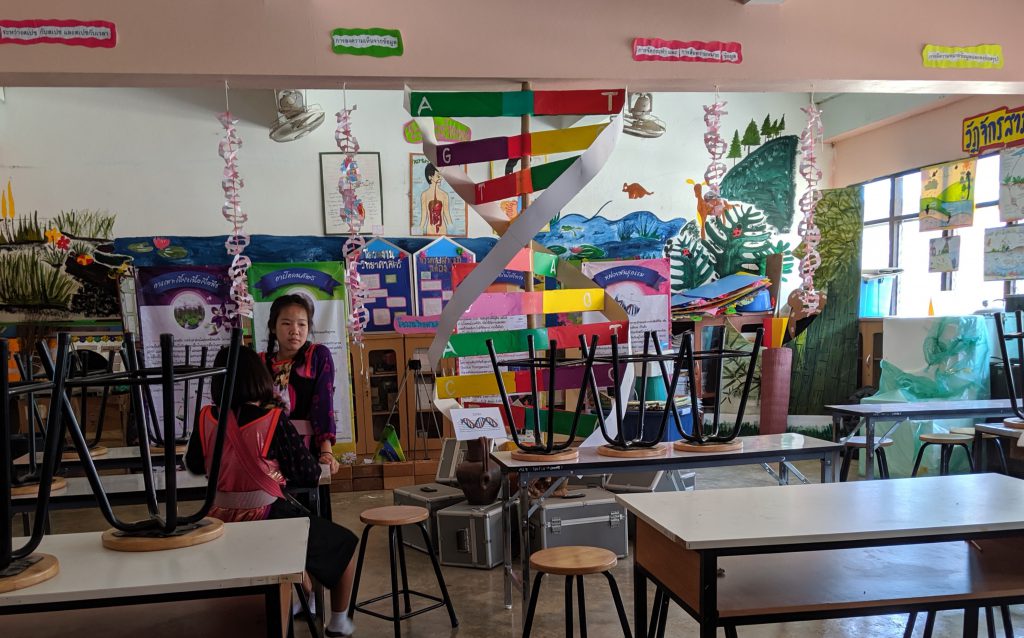
While national policies and ideals are important, the work that really happens and is enforced is within smaller communities like schools. This is where knowledge is practiced and built. Let’s take a look at some information brought by a generalized study on sex education in Thailand from UNICEF. In Thailand, the form of sex education taught is called CSE, otherwise known as Comprehensive Sexual Education. This education focuses on sexuality and relationships, covering topics met by the International Technical Guidance on Sexuality Education. There are national standards to be met for this, but let’s dive into how it is really being practiced in the schools and what affects the lack of learning in these environments. Within CSE, there are 5 topics covered. First, gender roles within sexuality. More female students were noted in studies to have heard about this, showing the uneven equality amongst genders. While students claimed to know about sex education, self-assessed studies showed that women’s main form of contraception was Plan B, and men were reluctant to wear condoms. This shows the problems within gender roles and the need of this section to be taught. The lack of sex education and the current forms of protection lead to the next topic, which is sexual health, relating to forms of protection for men and women. Then, the rest of the topics include violence, sexual rights, and identity and relationships. Studies show that about half of students find it acceptable for sexual violence to occur when necessary, and teachers focus on sex being a product of marriage. Both of these things lack sexual knowledge and don’t help with safety for when sex does occur. When it comes to the education itself, CSE is provided both separately and integrated within courses. Within a study done finding qualitative data within Thai secondary schools, 3/24 secondary schools taught CSE as integrated instead of separate, not allowing the topic to really be understood and focused on. This may include health education, or even integrated into social sciences or science class. From this, 82.2% of these teachers had a CSE teaching manual, 70.2% had instruction manuals, and 56.4% of the teachers had a written syllabus. Is sex education itself really being focused on (UNICEF, 2016)? When we went to the Chang Dao school, the teacher mentioned that sex Education is important for the older kids. But what about the kids growing up into the generation that is more likely to have sex? How many teachers are teaching the subject separately and truly teaching it? From the studies and information shown, it seems as though teachers have limited information and previous biases about sex that affect the students that have such limited knowledge of sex.
Causes and Mechanisms to End Sex Trafficking
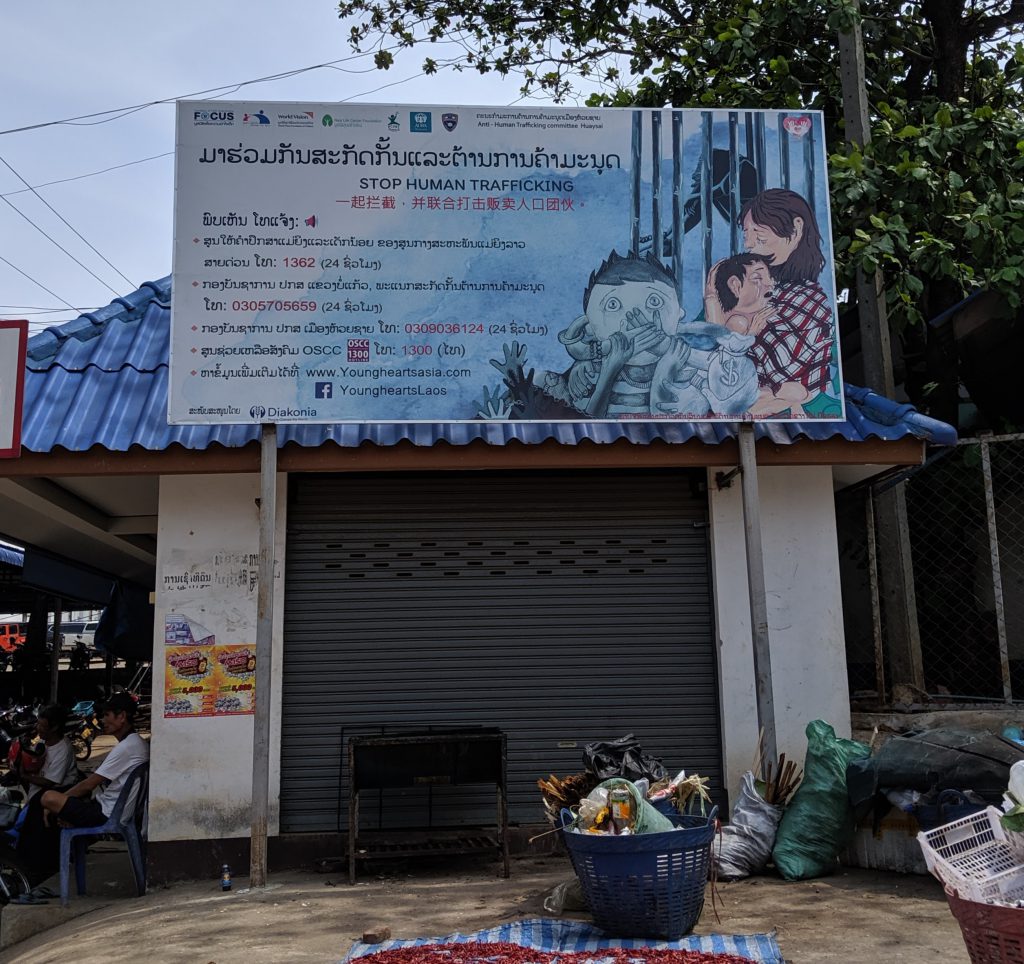
Thailand is a key state which houses the transit, destination, and source of sex trafficking victims. Sex trafficking is fueled by the popularity of the sex tourism industry, which subjugates victims into economic slavery to produce services for sex tourists. Victims do not willingly participate in the sex tourism industry, as most are coerced or deceived by family or friends into believing that they will be participating in legal work but are instead trafficked and subjugated (UN-Act). Marie, a representative from the Child Safe Movement, discussed how children are particularly vulnerable to sexual exploitation through a pimp, which allows them to control power over the victim. Sexual exploitation of children negatively affects children through the combination of sexual, physical, and mental abuse (Child Safe). Corruption as well as established underground methods to sustain sex tourism continues to make the detection of child sex trafficking much more difficult within the country.
Thailand is finding various ways to stop the trafficking of victims, and these include the use of governmental mechanisms, the installation of trafficking tasks force on law enforcement, and the encouragement of the tourism industry to help identify and end trafficking. Firstly, Thailand has eight governmental anti-trafficking mechanisms, as well as multiple laws since 1996 to combat the trafficking of victims. Some of these include the Anti-Human Trafficking Division (ATHD), the Anti-Trafficking in Persons Committee (ATP Committee), and the Coordinating and Monitoring of Anti-Trafficking in Persons Performance Committee (CMP Committee) (UN-Act). Additionally, Thailand has passed agreements with neighboring countries in the South East Asia region to create tasks forces as well as working with law enforcement agencies to identify and shut down trafficking between border countries (Thailand Law Forum). The tourism industry and tourists are also being called on to help shut down trafficking crimes. Touring groups are becoming trained to identify trafficking when it occurs during tours, and are disengaging in any activities or programs which may have a stake in the sex trafficking industry. Many tourist groups have partnered with organizations such as Child Safe to certify their businesses on the protection, training, and advocacy against sex tourism. Groups such as these are also encouraging tourists to become educated on the sex tourism industry, and how it can impact them. From the Child Safe workshop we participated in, some of these actions can include reporting any incidents of child sex or abuses seen, refraining from sex with minors, and refraining from acting or speaking in sexual manners towards minors including relationships, speech, or images (Child Safe).
The Effects and Risks of Sex Trafficking Victims

When facing the challenge of helping victims of sex trafficking, there are some statistics to keep in mind. In a study published in the Journal of Epidemiology and Public Health, 89% of those surveyed were under 18 when starting sex work. Furthermore, one-fifth of the respondents became pregnant at some point of being in the sex industry which is three times more likely than those who entered the industry willingly. Those trafficked were also twice as likely to experience violence. Since Thailand leads the region in incidences of HIV, education on this topic could potentially help lessen the lucrative aspect of the sex industry. This puts those trafficked at an increased risk. It’s also important to start including men in the education process. To increase efforts, there could be more done with those undocumented. Young girls from countries like Burma who immigrate to Thailand without documentation are at an increased risk. Sex trafficking is a mulit faceted issue and should be treated as such. Beneficial services may include therapy, childcare, education, and sexual healthcare.
To conclude, the impact of policy, education, and society on sexuality in Thailand is still taking strides to improve the sexual health and wellbeing of the country. Sex education was initiated by the government nationally through the Cabbages and Condoms initiative from the result of the growing HIV/AIDS epidemic. The effect of Cabbages and Condoms allowed for a diaglouge to destigmatize sex, and encouraged safe sex practices. Despite this initiative, local sex education is still developing in order to provide better proper sex education in schools. Responses from a UNICEF study show that individuals in Thailand are misinformed about safe sex practices, especially regarding proper use of birth control and sexual violence. Sexual violence and trafficking are also prominent issues in Thailand, with sex trafficking being one of the top types of human trafficking in Thailand. With this in mind, we discussed the initiatives which the government is taking in order to end human trafficking, and then discussed the effects which sex trafficking has on surviviors. WIth this in mind, we were able to identify where the government of Thailand is working to improve policy regarding sexual health, education, and exploitation, yet we have also realize that there is still much work to be done regarding issues of sex education and human trafficking.
References
….. Cabbages & Condoms Resort and Restaurant ….. (n.d.). Retrieved from http://www.cabbagesandcondoms.net/
Decker, M. R., McCauley, H. L., Phuengsamran, D., Janyam, S., & Silverman, J. G. (2011, April). Sex trafficking, sexual risk, sexually transmitted infection and reproductive health among female sex workers in Thailand. Retrieved from https://www.ncbi.nlm.nih.gov/pmc/articles/PMC3521618/
Liebolt, C. (2014). The Thai Government’s Response to Human Trafficking: Areas of Strength and Suggestions for Improvement (Part1). Retrieved from http://thailawforum.com/articles/thailand-human-trafficking.html
Thailand. (n.d.). Retrieved from http://un-act.org/thailand/
UNICEF, Ministry of Education. “Review of Comprehensive Sexuality Education in Thailand” (2016). Retrieved from https://www.unicef.org/thailand/sites/unicef.org.thailand/files/2018-08/comprehensive_sexuality_education%20EN.pdf
Yurtoğlu, N. (2018). Http://www.historystudies.net/dergi//birinci-dunya-savasinda-bir-asayis-sorunu-sebinkarahisar-ermeni-isyani20181092a4a8f.pdf. History Studies International Journal of History,10(7), 241-264. doi:10.9737/hist.2018.658


